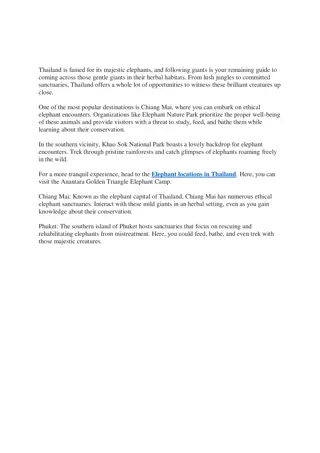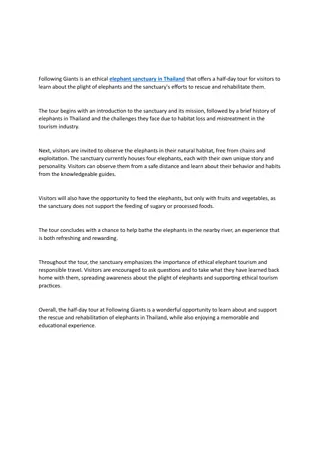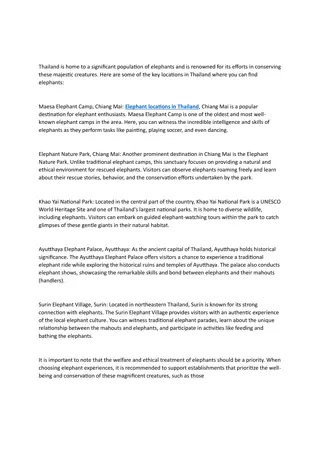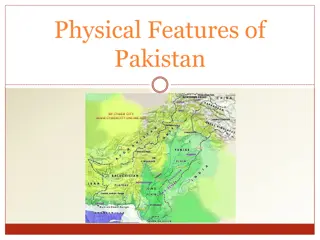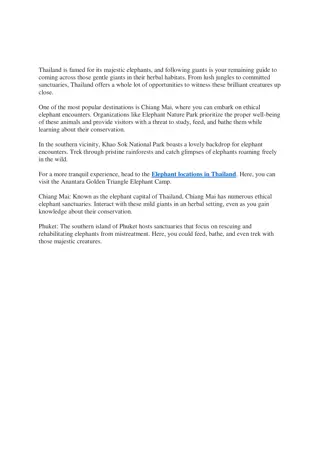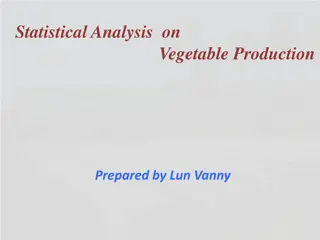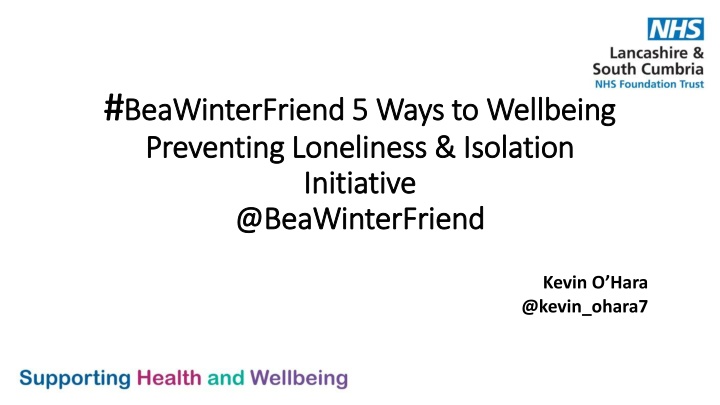
Preventing Loneliness and Isolation: BeaWinterFriend Initiative Overview
Learn about the BeaWinterFriend Initiative which focuses on preventing loneliness and isolation through a social movement approach. Explore the main elements, statistics, and the serious public health implications of loneliness. Understand how you can get involved and make a positive impact on your community's wellbeing.
Download Presentation

Please find below an Image/Link to download the presentation.
The content on the website is provided AS IS for your information and personal use only. It may not be sold, licensed, or shared on other websites without obtaining consent from the author. If you encounter any issues during the download, it is possible that the publisher has removed the file from their server.
You are allowed to download the files provided on this website for personal or commercial use, subject to the condition that they are used lawfully. All files are the property of their respective owners.
The content on the website is provided AS IS for your information and personal use only. It may not be sold, licensed, or shared on other websites without obtaining consent from the author.
E N D
Presentation Transcript
# #BeaWinterFriend BeaWinterFriend 5 Ways to Wellbeing 5 Ways to Wellbeing Preventing Loneliness & Isolation Preventing Loneliness & Isolation Initiative Initiative @ @BeaWinterFriend BeaWinterFriend Kevin O Hara @kevin_ohara7
Background to the Initiative: Last Winters #BeaWinterfriend Initiative Lockdown and impact on loneliness and isolation Emphasis on self-care, Individuals and organisations supporting each other 70 plus organisations involved: Statutory and the VCFSE Twitter, facebook, Instagram social media initiative
Loneliness and Isolation Statistics 49% of UK adults reported that their wellbeing was being affected- loneliness, anxiety, stress, and boredom given as examples. Early November 2020 (OFNS) Young people aged 18 to 24 are most likely to feel lonely since lockdown began:44% ( Mental Health Foundation) 1.7 million older people in England went a month without meeting up with a friend, (Pre- Covid) and 300,000 over 65s had not even had a conversation with family or friends over same period (Age UK study 2018) 67% of BAME Survey respondents who felt they didn t belong to their community said they were always or often lonely compared to just 16% who felt they did belong. (Barriers to belonging Survey) People with learning disabilities are 7 times more likely to feel lonely than the general population and one third of people with physical disabilities are spending too much time alone. (Mencap)
Serious Public Health Issue Increases risk of death by 26 to 32% Mental and physical effects Clinical symptoms No clinical solution Pandemic Impacted those not normally susceptible Lockdowns, social distancing PTSD, pre existing mental health issues, bereavement, unemployment are all life events that trigger loneliness NHS mental health services 1stwave modelling suggested a post pandemic increase in demand of 28-35%
Main Elements of the 5 Ways to Wellbeing #BeaWinterFriend Initiative: Asset Based Approach & a Social Movement : not re-inventing the wheel Social Media Campaign: A Call to Action Asking people to be a Winter Friend to themselves, to their family, friends, work colleagues and vulnerable neighbours. Showcasing the Wellbeing work of the CVFSE and Statutory Organisations, Connecting people to services. Partnership work both internally and externally across the ICS with organisations who will Winter Friends
Examples of an organisation Being Winter Friends and helping people they support through this winter: An organisation can be a Winter Friend by helping someone to Connect to a service or activity (Social prescribing Teams) An organisation can be a Winter Friend by supporting someone to Be Active (MyPlace LWT) An organisation can be a Winter Friend by helping someone to Keep Learning through a large array of courses (Recovery College and Lancashire Adult Learning ) An organisation can be a Winter Friend by supporting people to Give their time (Volunteering organisations) An organisation can be a be a Winter Friend by helping people to Take Notice of what is available in their community (PNECET)
Examples of individuals being Winter Friends and supporting friends through this winter: A Friend that helps someone Connect to a service they need (could be an essential service-winter fuel payment for the elderly ) A friend who gets someone to Be active over the winter and beyond a walk, digital online arm chair aerobics session. A Friend who Takes Notice to look out for a vulnerable or elderly neighbour and checks in on them regularly. A Friend who helps someone to Keep Learning by encouraging them to take a learning course, potentially buddying up with them to do one. A Friend who will Give up their time to clear snow from an elderly or disabled neighbours footpath, make a lonely neighbour their Christmas lunch
Examples of how people can self-care and be a Winter Friend to themselves through this winter. Keep connected with friends and family and don t be afraid to ask for help if you need it Keep active indoors and outdoors ensuring you avoid or take precautions to avoid situations where slips and falls may happen. Take notice of the weather if you are going out and remember to wear plenty of layers of clothing. Keep learning by taking up a new online course or rediscover forgotten hobbies or take up a new one-drawing, painting, quizzes Give your time to other people volunteer as a befriender or keep in contact regularly with your friends especially those that live alone.
Where is it up to? Launch of Initiative: 1stDecember Link up with Lancashire & South Cumbria Organisations from previous initiative and engage with new partners Continued internal and external social media promotion of the Initiative to help prevent loneliness and isolation Utilise 5 Ways to Wellbeing themes throughout the initiative 21stMarch end of Winter! Spring into Summer !





